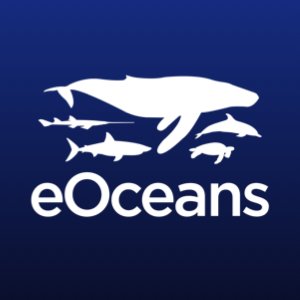Citizen Scientists, Scientists, and the Participation Triangle
Think about it: how many scientists were with you the last time you visited the ocean, coastline, forest, or any wild place? Outside of a few scientist hotspots like the Galápagos, the answer is probably zero.
That’s where participatory science—also commonly called citizen science—comes in. The public can help fill critical data gaps by enabling more people to observe and report. Our team has published extensively on the subject (see IMPACT page).
Citizen science doesn't replace expert scientific observation, but compliments it. And both can be powerfully enhanced by remote technologies like sensors, satellites, drones, and eDNA.
When we bring all these data sources together—local, expert, and remote—in one system, we not only increase the amount and resolution of data, but also deepen our understanding of ecosystems and how they’re changing.
How good are citizen science data?
It really depends on the question being asked.
At eOceans, the question determines the data that can and cannot use, and the method used to select the appropriate data is pre-defined, defensible, and transparent (e.g., in a publication).
For example, if we are helping someone describe a species-specific question like “What is the seasonal distribution of leopard sharks, Stegostoma fasciatum?” then we may restrict the data to include observations only made by experts, such as people recording them accurately over a 2+ year time period. On the other hand, if we are helping a community understand the socioeconomic or cultural value of shark interactions, we may decide to use all observations where someone logged a shark regardless of their expertise and experience.
How are observations validated?
Similar to the previous question, this answer depends on the question being asked. For example if your team is looking at social values, the blue economy, etc. then the identification of specific species does not matter because the focus is what activity the user was doing and for how long (the activity tracker!). This same logic applies to questions entered around garbage, ghost gear, and other threats.
Proper species ID is required for teams studying specific species. Here the concern of a user mixing up a shark with a dolphin is low because broad observations of ‘shark’ or ‘dolphin’ will likely not be used by the teams because they are more focused on specific species i.e. the ‘blacktip reef shark/C. melanopterus’. Therefore concern over improper ID is minimized because the people recording species specific observations are usually familiar with the species and have experience identifying it.
QAQC protocols are then used to validate observations. This is done by comparing observations made at similar times in the same area. For example, if someone sees a bull shark but a bunch of people at the same site are recording a sandbar shark, the bull shark will get flagged as an outlier. To minimize the human error of misrecording a species, a ‘recents’ section appears while recording observations to help the user remember what species they recorded last and lessen the likelihood of selecting the wrong species by accident.
Doesn’t scientific data need to have standardized effort?
Yes, and no.
eOceans is a platform for you and your team to collect and digitize your data, and to share with anyone that wants it.
If you’re a scientist that only wants standardized data, then that’s all you collect.
If you’re an opportunistic citizen scientist, or a scientist collecting data on your way out to perform standardized data collection, then your data may be less standardized. It varies.
Our pilot projects (eShark, eShark Thailand, eManta, Great Fiji Shark Count, Shark Sanctuary Evaluation, Global Marine Conservation Assessment) were primarily comprised of opportunistic observations collected from the recreational dive tourism industry. Through these, we found that although they weren’t specifically ‘standardized’ they were very close. Sites were regularly visited — daily, weekly, or monthly. Nearly 100% of dives were about 58 minutes, regardless of the site. Most sites were surveyed in exactly the same way, repeatedly. For example, surface to bottom (deepest part first), then slowly move towards shallower water following one of a few paths across the site, then head to the surface.
Many other activities are similarly approximately standardized. Ferry crossings, for example, go back and forth repeatedly.
On the other hand, other activities do not follow a standardized approach — fishers move with fish, for example. Fortunately, there are now a suite of statistical analysis that can handle varying effort through time and space.

